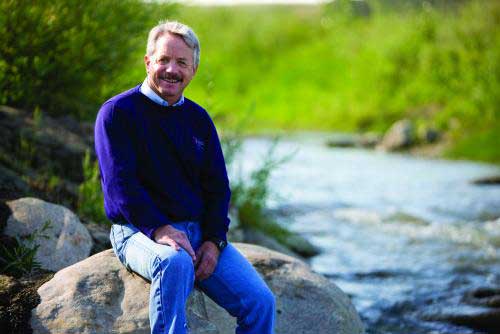When it comes to Alberta's spring systems – the points at which groundwater comes to the surface – very little is known.
However, as surface water resources become overextended in the province, it's likely the region will look to aquifers, the underground layers of permeable rock, sand, silt or clay that have absorbed groundwater. Alberta is in a unique position of not yet having significantly tapped its extensive groundwater resources, so there is still time to

Dr. Stewart Rood is co-leading a group of researchers from Alberta, Saskatchewan and Arizona together with Dr. Abe Springer of Northern Arizona University as they investigate springs throughout southern Alberta.
But the solutions don't just spring from the ground. That's why a team of researchers, through the Alberta Springs Project, is studying groundwater sources as a strategy to learn more about what lies below the surface.
The project, which has secured $200,000 in funding over four years from the Imperial Oil Foundation, has attracted researchers from across North America.
Dr. Stewart Rood, who holds the University of Lethbridge Board of Governors Research Chair in Environmental Science and is a 2008 recipient of the Killam Research Fellowship, is co-leading a group of researchers from Alberta, Saskatchewan and Arizona together with Dr. Abe Springer of Northern Arizona University.
The group is investigating springs throughout southern Alberta, studying their hydrology, water chemistry and aquatic and riparian ecology. They hope to find out, among other things, how springs are impacted by seasonal and climatic changes; how the type of spring affects the area's biology; and how groundwater relates to surface water – information that will all contribute toward helping Alberta plan for a sustainable future.
